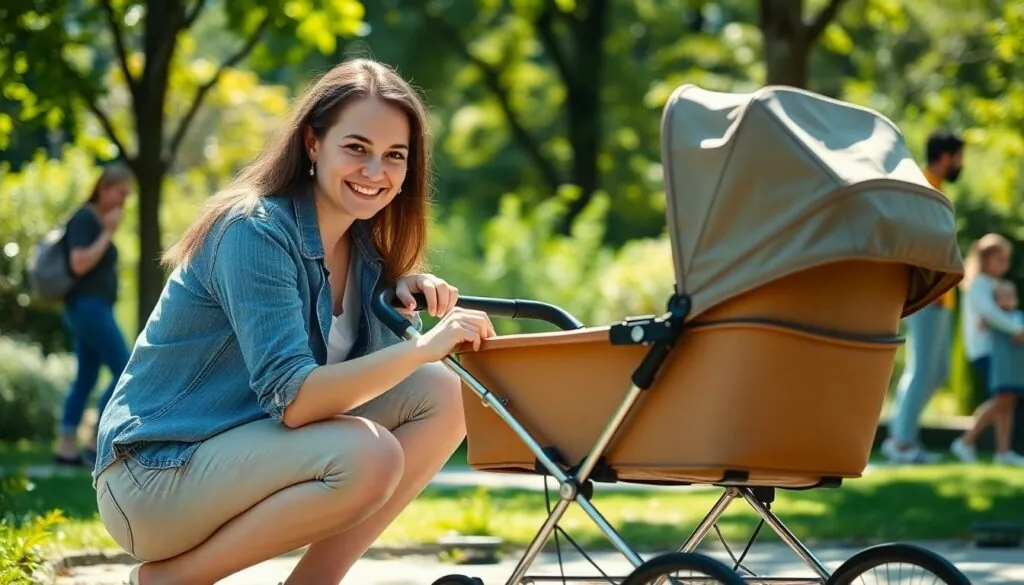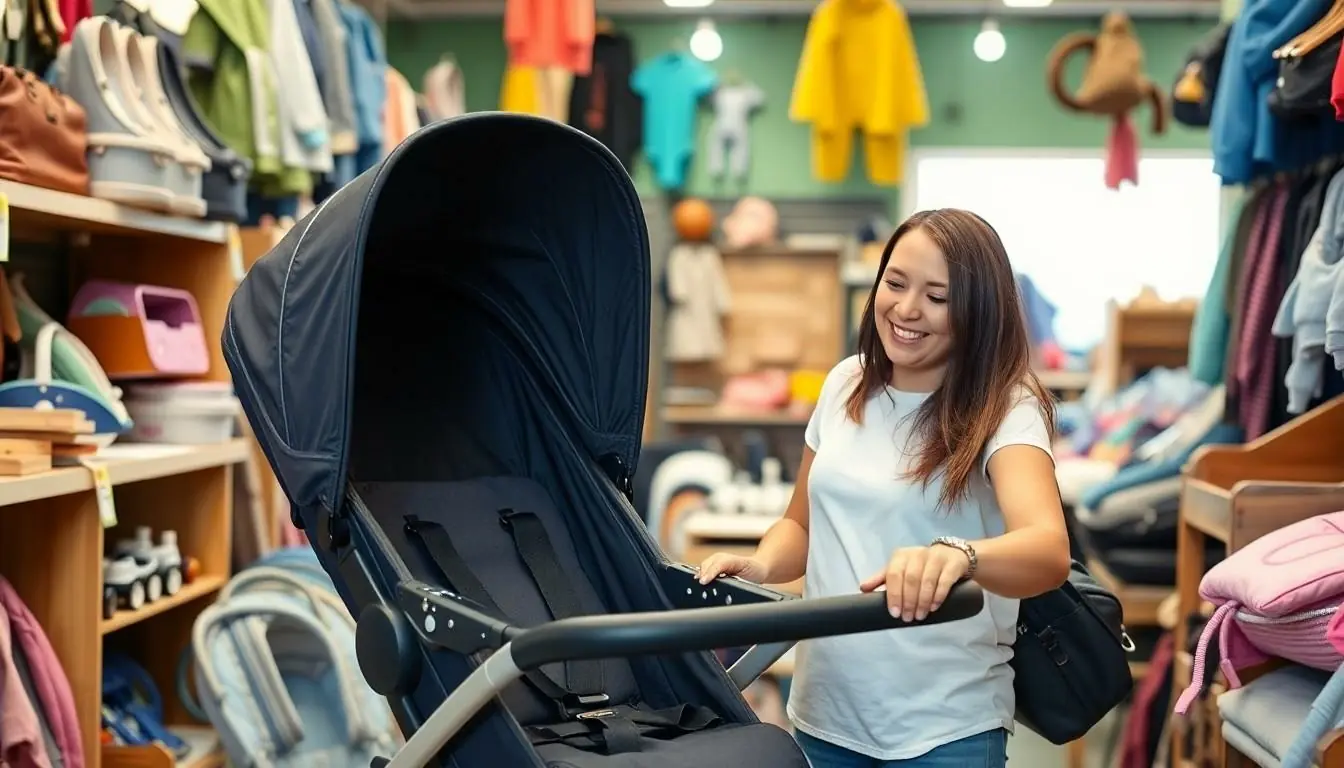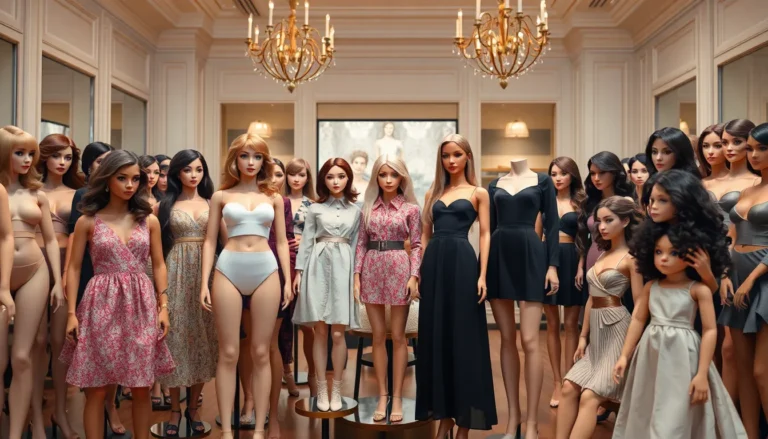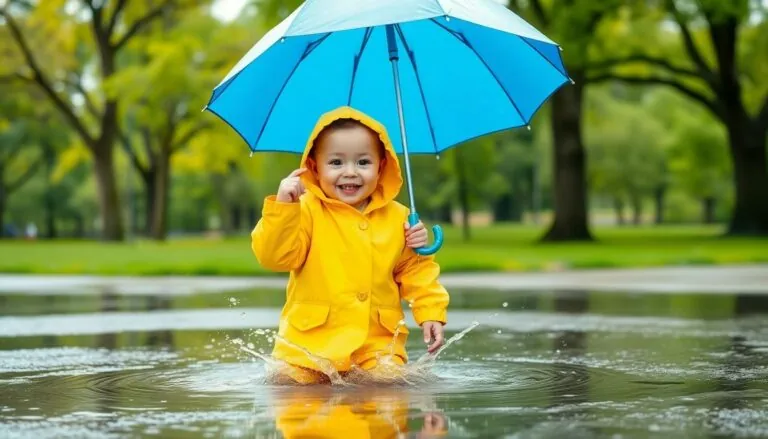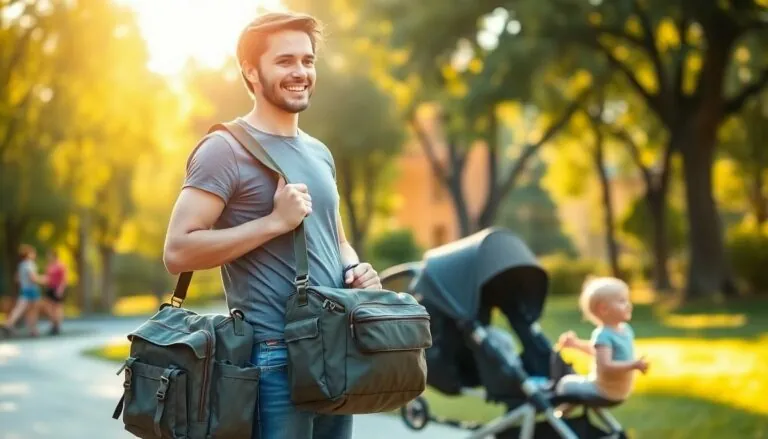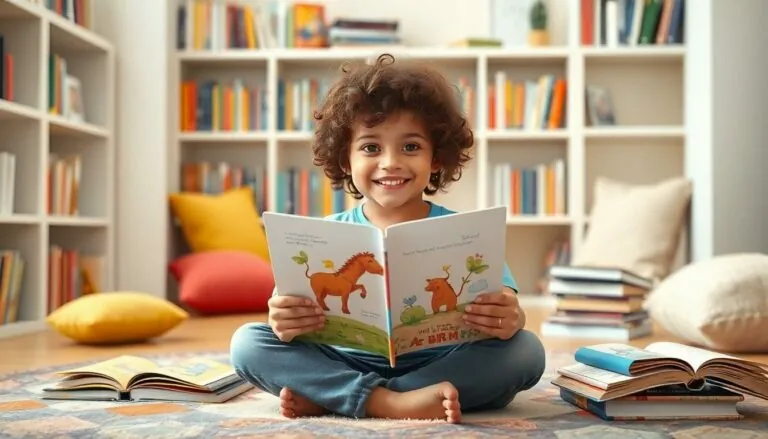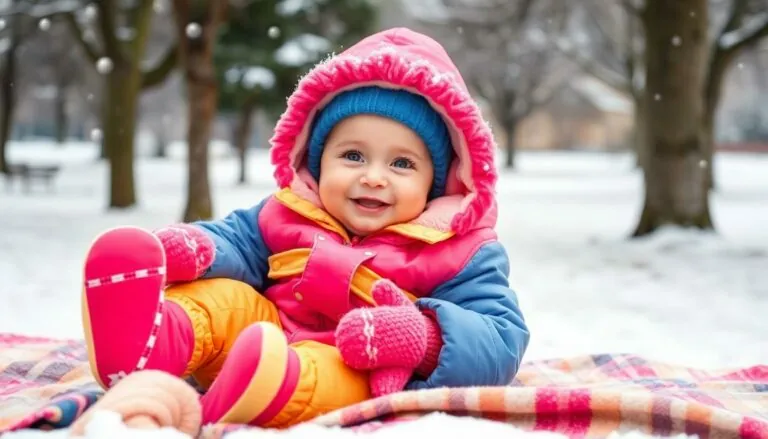Table of Contents
ToggleWhen it comes to baby gear, parents often find themselves drowning in a sea of choices, all while trying to stay afloat in a budget that seems to vanish faster than a pacifier under the couch. Enter secondhand baby gear—the unsung hero of parenting that not only saves money but also gives those barely-used items a second chance at life. Who knew that a gently used stroller could come with a side of eco-friendliness and a sprinkle of nostalgia?
Overview of Secondhand Baby Gear
Secondhand baby gear offers an array of benefits for parents seeking budget-friendly options. Cost savings represent a significant advantage, as gently used items can be up to 70% cheaper than their brand-new counterparts. Eco-friendliness also stands out; choosing secondhand helps reduce waste and minimizes the carbon footprint associated with manufacturing new products.
Various types of baby gear can be purchased secondhand. Consider strollers, cribs, and high chairs as prime examples. Each of these items often boasts plenty of life left, especially when purchased from reputable sources, such as thrift stores or online marketplaces.
Security remains a priority even with secondhand purchases. Parents should check for safety recalls on items like car seats, ensuring compliance with current safety standards. Cleanliness also plays a vital role; items must be thoroughly sanitized before use, as babies are susceptible to germs.
Parents often find a sense of community when engaging with secondhand markets. Conversations arise through platforms designed for parents, allowing them to share their experiences and tips. Networking with others can lead to discovering high-quality items and receiving recommendations for trustworthy sellers.
Convenience often accompanies buying secondhand. Most online platforms allow parents to filter searches based on proximity, price, and condition, making it easy to find what they need. Networking with local parent groups can also simplify logistics, as parents frequently organize swaps and sales, fostering a supportive environment.
Secondhand baby gear can fulfill both practical and sentimental needs. Parents may appreciate the nostalgia tied to certain items, like vintage strollers, which evoke cherished memories. Personal connections often develop through these transactions, bringing joy beyond just saving money.
Benefits of Buying Secondhand Baby Gear
Buying secondhand baby gear brings multiple advantages worth considering.
Cost Savings
Significant savings accompany secondhand purchases. Up to 70% can be saved compared to new items. Budget-conscious parents appreciate the financial relief that gently used alternatives offer. Strollers, cribs, and high chairs can often be found at a fraction of their retail prices. Buying used allows for the purchase of higher-quality or brand-name items that may otherwise be unaffordable. Additionally, these savings free up funds for other essential expenses related to baby care.
Environmental Impact
Sustainability benefits arise from choosing secondhand gear. Opting for used items actively reduces waste and minimizes the overall carbon footprint. Every piece of gear reused decreases the demand for new products, which often require significant resources to produce. By purchasing secondhand, parents engage in eco-friendly practices that benefit the planet. Moreover, repurposing items promotes a circular economy where products are continually cycled through different families. This approach lessens landfill contributions and fosters a more environmentally conscious mindset.
Risks and Considerations
Secondhand baby gear offers benefits, but certain risks and considerations warrant attention.
Safety Concerns
Safety plays a crucial role when selecting secondhand baby gear. Checking for product recalls is essential, as manufacturers periodically issue safety warnings. Parents must verify that items comply with current safety standards as guidelines may change over time. Notably, older items may lack modern safety features, increasing potential risks. Strollers must have functioning brakes, and cribs must meet safety criteria to prevent hazards. Thoroughly inspecting the gear helps parents identify any signs of wear, structural damage, or missing parts. Always prioritize safety by researching brands and reading reviews before making a purchase.
Condition of Items
Condition varies among secondhand baby gear, impacting long-term usability. Inspecting items carefully before acquiring them remains vital. For instance, strollers should have intact wheels and harnesses. High chairs must show no peeling or damage to fabric or wood. Parents should look for signs of heavy use, such as cracks, rust, or stains, that could indicate compromised durability. Cleanliness also factors into the decision; items that seem well-maintained are often more reliable. Purchasing from trusted sources increases the likelihood of finding quality gear in good condition, ensuring a safer experience for both parent and child.
Where to Find Secondhand Baby Gear
Finding secondhand baby gear can be straightforward with the right resources. Various avenues offer convenient ways to locate gently used items.
Online Marketplaces
Online marketplaces cater to a wide audience, making it easy to purchase secondhand baby gear. Websites such as Facebook Marketplace, Craigslist, and eBay provide numerous listings. Users can filter searches based on proximity and condition to find optimal options. Sellers often upload images and descriptions, allowing buyers to assess quality before contacting them. Popular apps like OfferUp and Letgo also enable local transactions with added convenience. Engaging with these platforms can lead to significant savings as prices often range from 30% to 70% less than retail, offering budget-friendly choices for parents.
Local Shops and Yard Sales
Local shops and yard sales serve as practical alternatives for sourcing secondhand baby gear. Thrift stores, consignment shops, and specialty resale shops frequently carry quality items. Parents can browse selections in person, inspecting each piece firsthand. Yard sales offer another avenue, as local families often sell gently used baby items at low prices. Checking neighborhood bulletin boards or community social media groups reveals upcoming sales. Asking friends or family about their items can also uncover hidden opportunities. These methods foster connection while saving money, allowing parents to find unique pieces in their area.
Tips for Buying Secondhand Baby Gear
Finding quality secondhand baby gear requires attention to detail. Parents can ensure safety and functionality through inspecting each product carefully.
Inspecting Products
Examine items thoroughly for signs of wear and damage. Look for frayed fabrics, rust on metal components, or cracks in plastic. Check for missing parts, as these can compromise usability. Confirm that all safety features, like harnesses and brakes, are intact and functioning. It’s essential to review labels for recalls or safety standards compliance. Prioritize items that appear clean and well-maintained. Parents should remember that gently used products often work just as well as new, provided they meet safety standards.
Asking the Right Questions
Inquire about the item’s history before purchasing. Ask the seller how long they used the product and for what purposes. Find out if the item has been in any accidents or has had repairs done. Assess if the product includes any accessories that enhance its functionality. Clarify why the seller is parting with the item; this can indicate its condition. Request documentation or receipts that confirm its safety standards, if available. Gathering this information can help make informed decisions while purchasing secondhand baby gear.
Conclusion
Choosing secondhand baby gear offers parents a practical and budget-friendly solution while fostering an eco-conscious mindset. It allows families to provide quality items for their little ones without breaking the bank.
By embracing gently used products, parents not only save money but also contribute to a more sustainable future. The sense of community formed through secondhand markets enhances the parenting journey, creating connections that extend beyond transactions.
Ultimately, opting for secondhand gear enriches the experience of parenthood, combining nostalgia with financial wisdom. It’s a choice that benefits both families and the planet.

